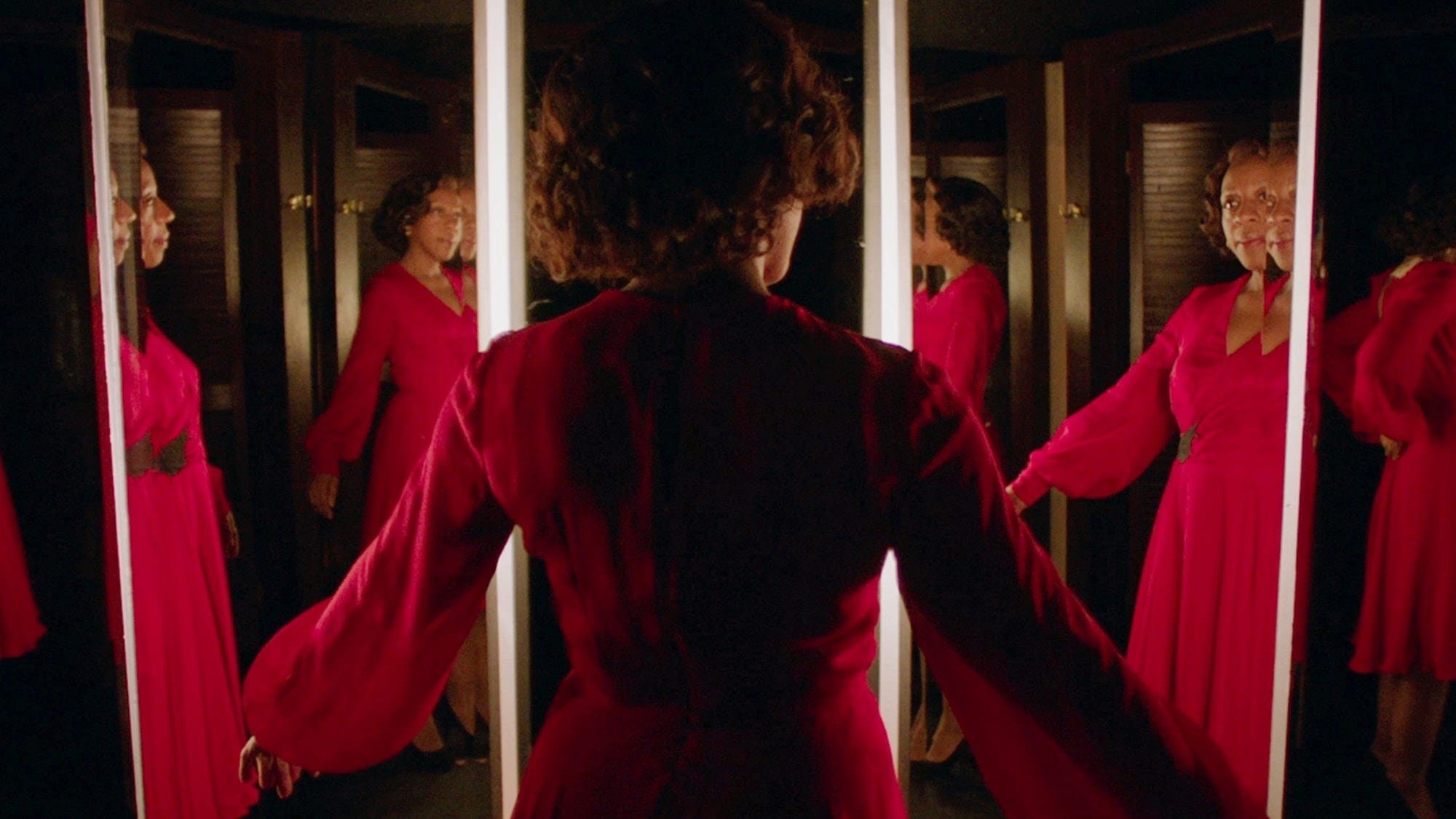
In Fabric‘s opening credits sequence is one hell of a mood setter. As terrifically creepy music from Cavern of Anti-Matter blasts through the speakers and clips from the film flash onscreen sans context, it’s hard not to get unnerved. Peter Strickland is nothing if not a unique storyteller and he quickly promises his audience something special.
And for a while, it is.
As the film begins, we’re introduced to Sheila (Marianne Jean-Baptiste), a divorced mom struggling to connect with her adult son and failing to forge a romantic relationship out of the slim options around her. With a date on the horizon, she takes a trip to a new clothing boutique that’s the talk of the town, where she comes across a stunning red dress. Despite being a few sizes too small, it seems to fit her perfectly, so she takes it home. And then things get creepy: she hears weird noises in her closet, she’s developing a nasty rash on her body, and the sales woman (a brilliant Fatma Mohamed) speaks in cryptic riddles whenever she tries to learn more about the mysterious garment.
One of the best storytelling decisions Strickland makes is that he reveals pretty much from the get-go that this dress, and the entire shop that once housed it, are supernatural. Borrowing heavily from the 1970s edition of Suspiria and other giallo horror films, In Fabric walks the very fine line between camp and genuine terror, basing many of its scares on very silly ideas, but often executing them in unnerving ways.
It’s honestly a sign of Strickland’s talent as a filmmaker that shots of a red dress floating above its owner as she sleeps can simultaneously be funny and eerie, but that dress proves to be a fabulous villain. There is also some deeply unsettling, nightmarish imagery here that fully gets under your skin, from creepy store clerks silently staring at customers to shoppers stampeding over one another on the way into the store.
But just as Sheila’s absorbing story reaches its close, something strange and truly terrible happens: another story begins. Suddenly, we’re following a new protagonist as a young man encounters the dress thanks to a prank at his bachelor party. He takes it home, which fundamentally changes his relationship with his fiancée. It’s a unique hook, but there are some problems with this sudden change in plot. For one thing, it feels abrupt, especially since so much time is devoted to Sheila’s arc. The film’s first arc also explores so many different layers behind the story, from the evils of capitalism to sexist double standards in relationships, that it really feels like the movie has run out of interesting material to explore. And, most importantly, this second story just isn’t good!
As a supernatural indictment of capitalism and retail, In Fabric mostly works. Is it subtle? No, but it’s also a movie about a floating red dress with nefarious intentions. Why bother with subtlety? And while it may not be subtle, it does at least know how to balance its social commentary with story and scares—at least during the first hour.
But once the second story starts, the film tries to take on too much and completely loses any entertainment value. Extended scenes stretch on to no end, trying awkwardly to blend comedy and weirdness. The whole tone of the comedy shifts too, trending towards British sitcoms whereas the first act relied on more satirical humor. When viewed as a traditional anthology film, it doesn’t work because the two acts are wildly inconsistent in terms of quality. If viewed as two acts in the same story, they don’t work because they feel like two completely separate films.
I wanted to love In Fabric, mainly because, for an hour, I was fully absorbed by the story. The first arc is four-star material, and feels like the next great entry in this mini horror renaissance we’re having. But then that second hour hits, and the whole film falls apart. There’s still a lot of originality to enjoy on screen, including great set design and uniformly strong performances. But, it’s the sort of movie that’d be best enjoyed if audiences all walked out at the one-hour mark.

